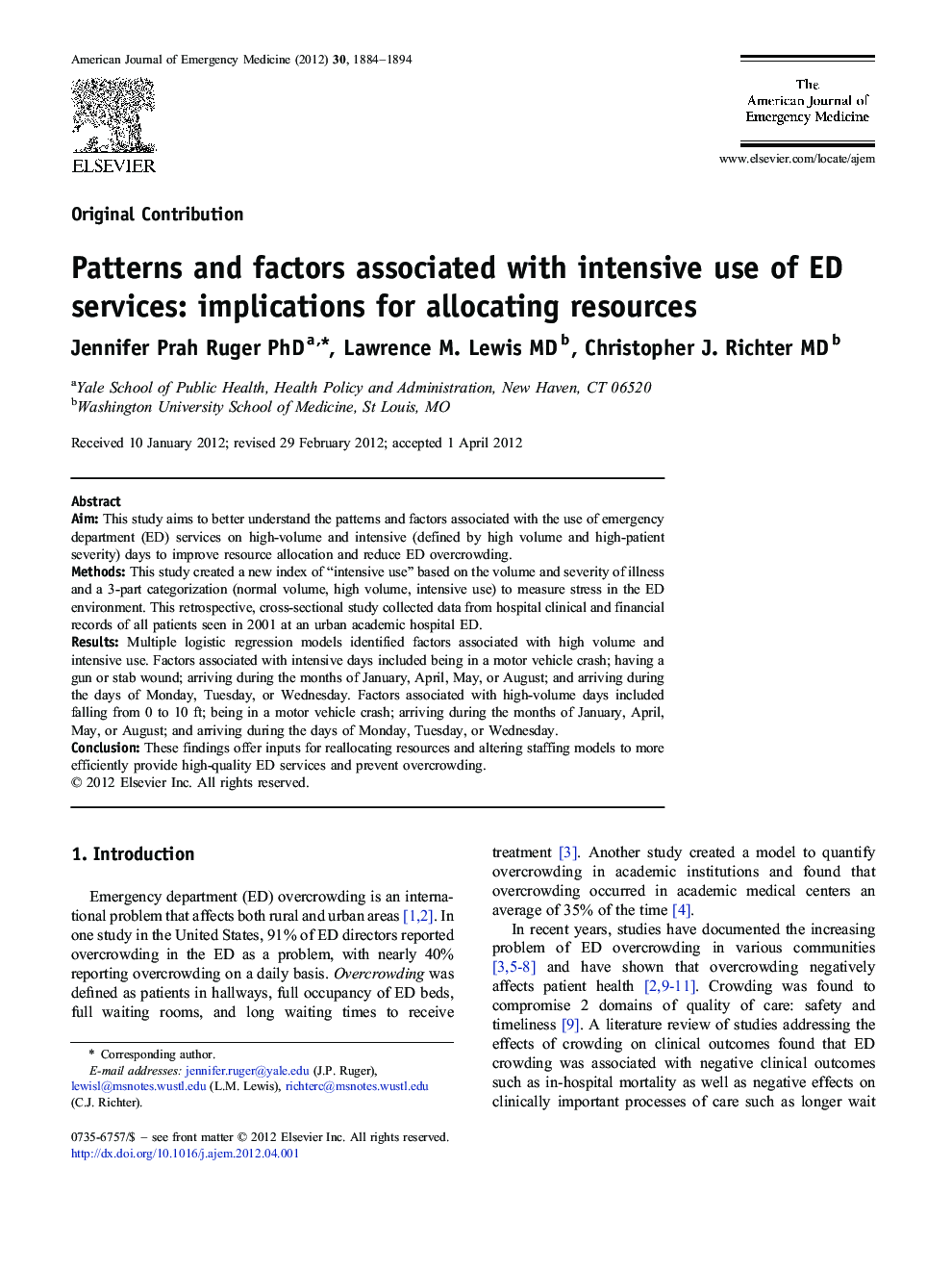| Article ID | Journal | Published Year | Pages | File Type |
|---|---|---|---|---|
| 3224910 | The American Journal of Emergency Medicine | 2012 | 11 Pages |
AimThis study aims to better understand the patterns and factors associated with the use of emergency department (ED) services on high-volume and intensive (defined by high volume and high-patient severity) days to improve resource allocation and reduce ED overcrowding.MethodsThis study created a new index of “intensive use” based on the volume and severity of illness and a 3-part categorization (normal volume, high volume, intensive use) to measure stress in the ED environment. This retrospective, cross-sectional study collected data from hospital clinical and financial records of all patients seen in 2001 at an urban academic hospital ED.ResultsMultiple logistic regression models identified factors associated with high volume and intensive use. Factors associated with intensive days included being in a motor vehicle crash; having a gun or stab wound; arriving during the months of January, April, May, or August; and arriving during the days of Monday, Tuesday, or Wednesday. Factors associated with high-volume days included falling from 0 to 10 ft; being in a motor vehicle crash; arriving during the months of January, April, May, or August; and arriving during the days of Monday, Tuesday, or Wednesday.ConclusionThese findings offer inputs for reallocating resources and altering staffing models to more efficiently provide high-quality ED services and prevent overcrowding.
